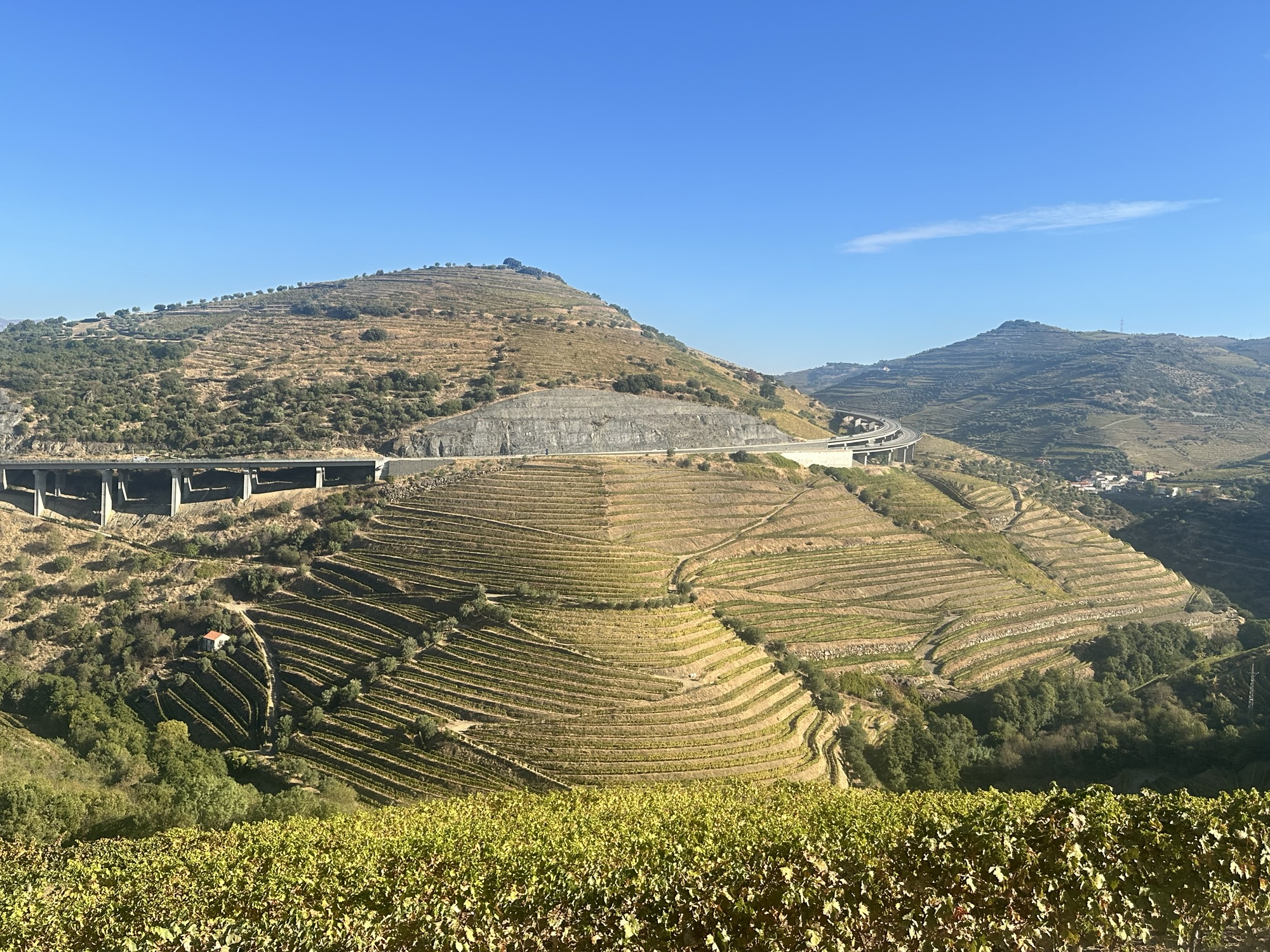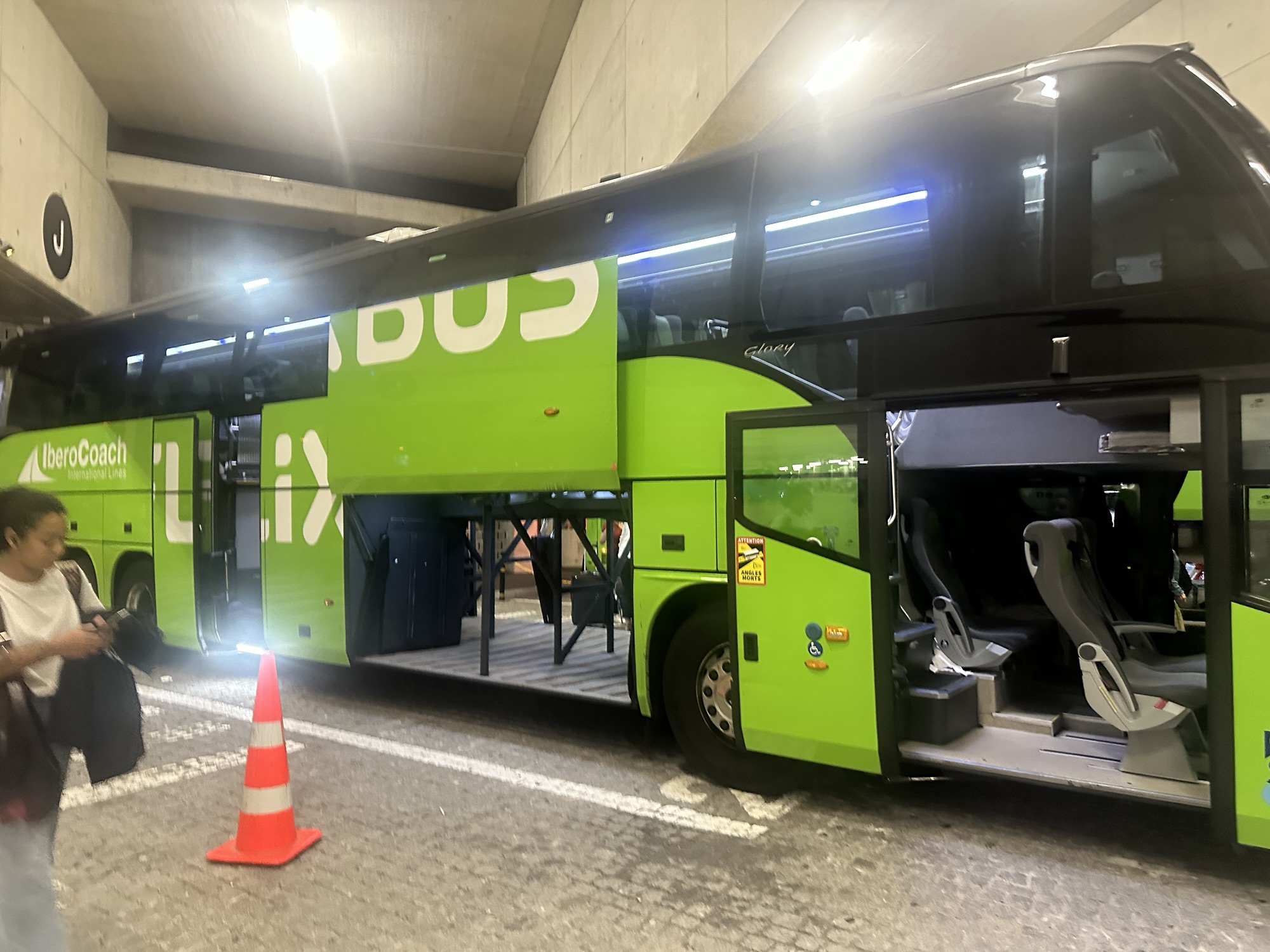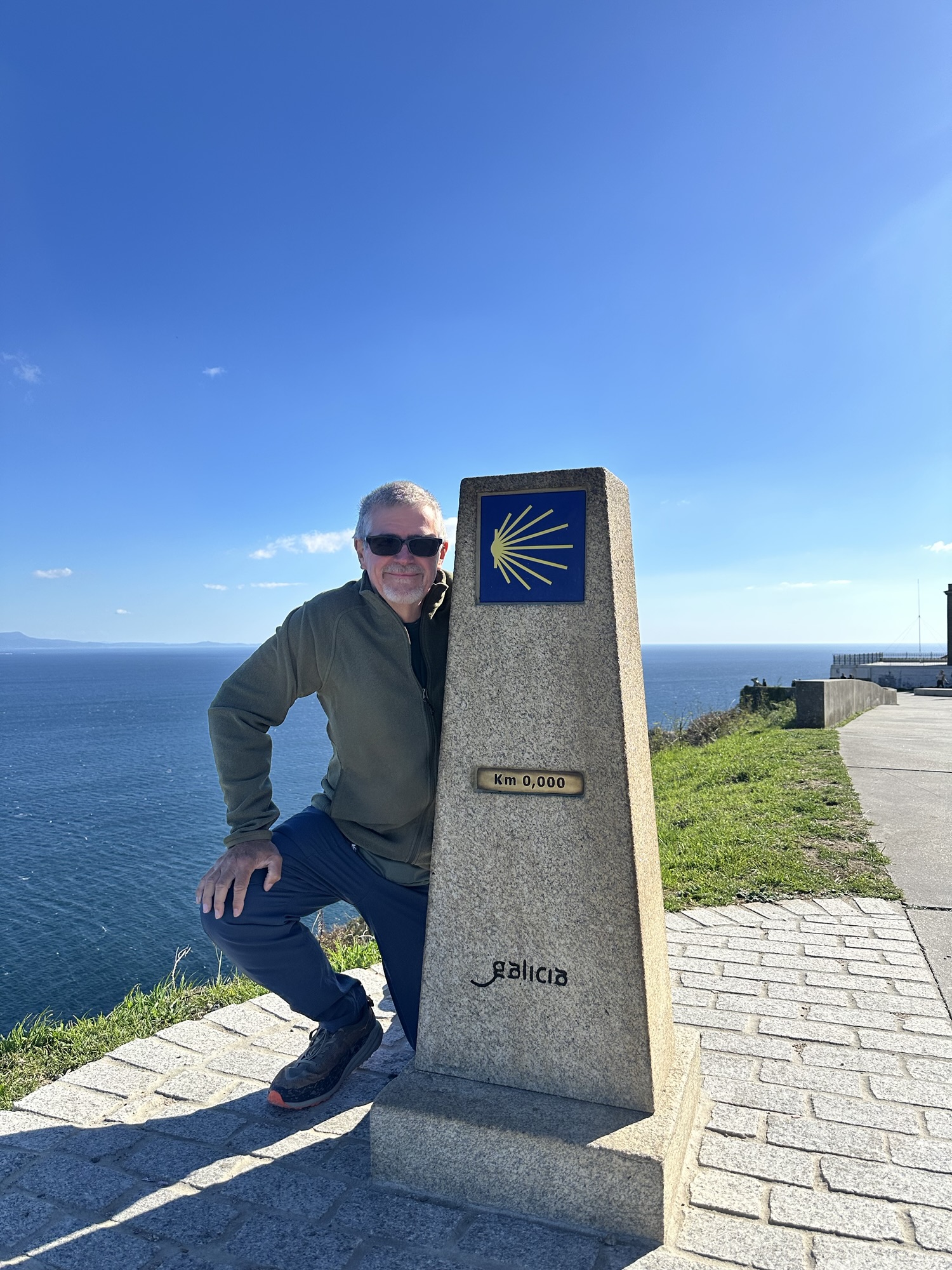Oct 11
The hostel was very noisy last night. Snoring, creaking beds and floor boards. Getting out of the top bunk was not as bad as I feared, but I have requested a lower bunk for tonight.
I have an all-day tour today, so I packed everything up, abandoned my backpack in the 8-person sleeping room and left a note for the desk clerk. Hope it all works out.
I left the hostel around 6 this morning. Being near the train station, there were ample cafes open for an early breakfast. I’m so glad to be back in Portugal where a hearty breakfast can be had for €4.50.
I then walked through the dark, empty streets of Porto towards my tour pickup point next to the cathedral.
Our 30-person minibus uncludes wifi and charging ports. Our guide, Maria, explains that the Douro Valley was one of the first designated vinticultural regions in the world, first recognized in the 1750’s and designated as a UNESCO world heritage site in 2013.
Maria was very informative and on the drive to our first stop, we learned about the major industries of the Porto region: shoe manufacturing, cork, tourism and construction. We also learned that there is currently a housing shortage in Portugal mainly being driven by immigration from Brazil and the US.
Our first stop was in the city of Aramante. A beautiful town with a river through its center and a church and bridge both restored by a monk who was later sainted.
We then went through the Vino Verde wine region. Being between the ocean and the mountains and with a predominantly granite-based soil, it produces lighter wines.
We then went through the mountains in a tunnel nearly 6km long (3.5 miles) to emerge on the dry side of the mountains. With a mix of granite & shale-based soil and hotter, drier climate, grape vines have to work harder to produce fruit and the result are much bolder wines – perfect for Port.
Port is made by taking table wine and adding stronger alcohol (grapa or moonshine). This was done to stabilize wine for shipment to England when wars wars with France cut off the wine supply for the Brits.
The Douro Valley has 250,000 acres of vineyards and it’s almost all in steep, terraced slopes that can only be picked by hand.
We visited a small winery for a tour and tasting, then went to lunch – near a viewpoint. We sat at one long table for 30. To my left, a couple from Boston. Across from them, two young women from Syria. Across from me a couple from Chicago who just moved to Lisbon. On my right, two young women from Manchester, UK.
Lunch was a creamed vegetable soup, cod cooked in cream sauce and cold vegetable medley. But the best part was the conversation.
On the way out, I saw a guy when the exact same pair of shoes. I stopped to talk with him and learned he was from Sacramento and was leaving from Porto on his Camino tomorrow.
Wine harvest used to be an all hands on deck effort with neighboring villages helping. These days, harvest relies on migrants from India, Nepal, Bangladesh & Morocco.
Our final stop for the day was in the town of Pinhao, which served as the shipping port for moving the barrels of port down the Douro on boats until a railroad was built in the late 1800’s. Now replicas of those boats are used to give tourists a river’s eye view of the valley.
Our way back to Porto started on N222 – “route 66 of Portugal.” Butto me, it reminded me of driving through the Columbia River gorge with a narrower river and much narrower road.


































